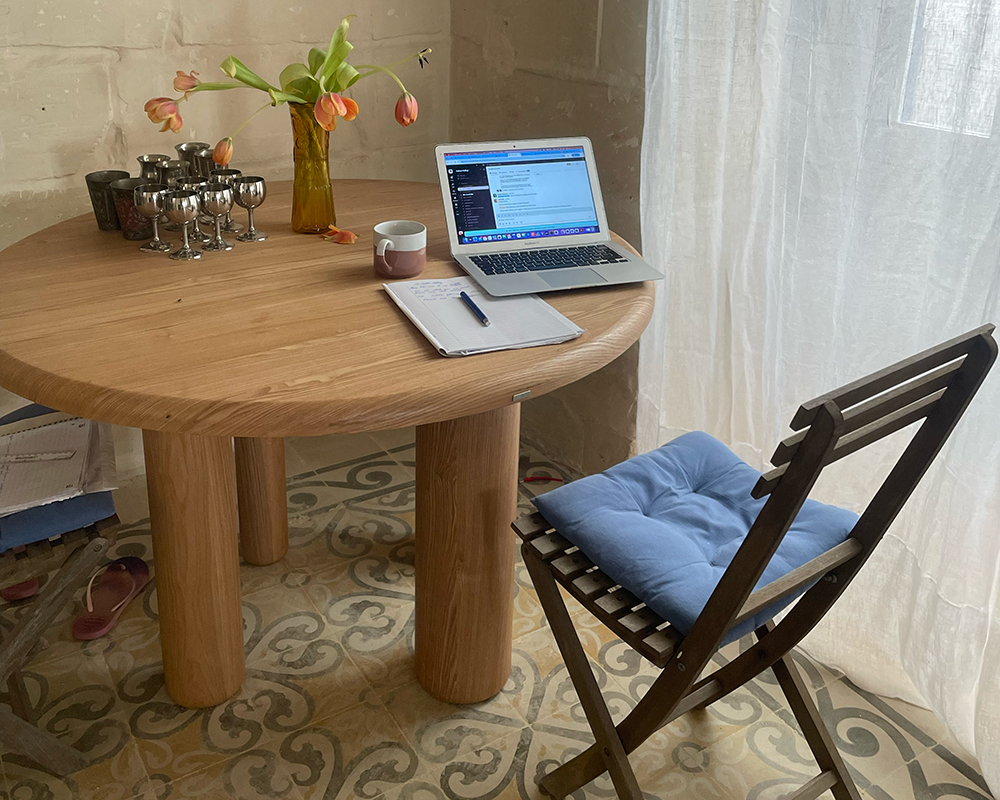The COVID-19 pandemic revolutionised the way we work: Let’s face it we did not have much choice especially in the arts/culture sector that was hit hard.
Looking at how things are working out some years on for arts and culture related companies like ours, it has opened up both opportunities and challenges alike.
While remote working has become the norm for many, offering some flexibility and reducing costs, it has also required a radical rethink about how we collaborate, connect, and support one another.
We can also not ignore how, while remote working for some has had a lovely liberating impact: for others, especially younger people, it has led to loneliness, lack of confidence and day to day support, sometimes leading to mental health issues.
Below we provide a glimpse into how we have worked to navigate this new way of working—and why it works for us (up to a point!) along with its challenges.
As background we should add that our workforce changed significantly during the pandemic and its aftermath: We had less staff, they were more spread out across the country, there were less on payroll and more freelancers working with us. We had no choice, we had to accommodate these change and find new ways of working.
How We Work Remotely and Flexibly
Our workforce is busy and we have many issues and challenges as we build back the business and grow into new areas, especially digital. With staff spread across London, the Southeast, the North and even overseas, we’ve worked to build a model that prioritises both flexibility and connection.
- Two London and a Manchester ‘Hub’: for meetings, and one location for operational staff in London who do not have the ‘luxury’ of working from home
- Co-Working Spaces: Our sales team enjoys a regular day at a co-working space outside, providing a structured environment and face-to-face interaction.
- Digital Nomad-Friendly Policies: From raising families to travelling abroad, our approach supports diverse lifestyles: Currently we have staff working in Japan, Portugal and Malta.
The Pros of a Flexible Workforce
- Cost Savings: Downsizing some office space has allowed us to save on costs.
- Work-Life Balance: Reduced travel time and flexible schedules help staff balance personal and professional lives—whether that means spending more time with family or even adopting a pet (and we have plenty)
- Attracting Talent: Remote work aligns with the aspirations of some younger staff, who value freedom and the chance to explore digital nomadism.
- Staff Retention and Well-Being: Flexibility fosters loyalty and even happiness, which hopefully translates to better work outcomes.
The Challenges of Remote Work
While there are benefits, remote working does come with its hurdles and challenges:
- Induction and Onboarding: Bringing new staff up to speed takes longer when everyone’s working remotely: this is especially the case for younger staff who have never worked in an ‘office environment’.
- Reliance on Tech: A stable internet connection and reliable platforms are essential—and any hiccups can disrupt productivity as we have found in one of our offices.
- Social Interaction: Remote working can be isolating, and team spirit can suffer without regular face-to-face time.
- Project Speed: Projects can sometimes move slower when people are not face to face: In an office we can just shout/talk across a room to ensure everyone is on the same page.
How we worked to overcome These Challenges (and we are still working on it)
We’ve learned that staying connected and equipped is key to overcoming the downsides of remote work. Here’s what works for us:
- Top-Notch Tech: Tools like Freddie Fireflies for virtual meetings, Trello/ Sharepoint for project management, and Slack for team communication keep everyone in sync.
- Flexibility and Understanding: We know life happens—so we accommodate varied schedules and needs to support our team: but we have to monitor this to ensure that it works and things get done to schedule.
- Teams and zoom: Now a way of life but we have got used to making the most of this with fun and laughter alongside hard work.
- In-Person Connections: Regular social and team-building days are a cornerstone of our strategy. These not only save time by resolving issues quickly but also strengthen relationships, reduce loneliness, and foster collaboration.
Why Face-to-Face Still Matters
While technology keeps us connected, nothing replaces the value of meeting in person. Team days allow us to brainstorm, problem-solve, and simply connect on a human level. They remind us that behind every email or Slack message is a real live colleague who’s working for the same goals.
For us we have had no choice but to embrace a new way of working: like many others we no longer can have staff in the same place every day. At its core, our approach is about balance—embracing the flexibility of remote work while keeping people at the centre of what we do.
It’s not just about getting the work done: Our aim and challenge is to support a workplace where everyone can thrive, no matter where they’re based.
- Colin Hann

